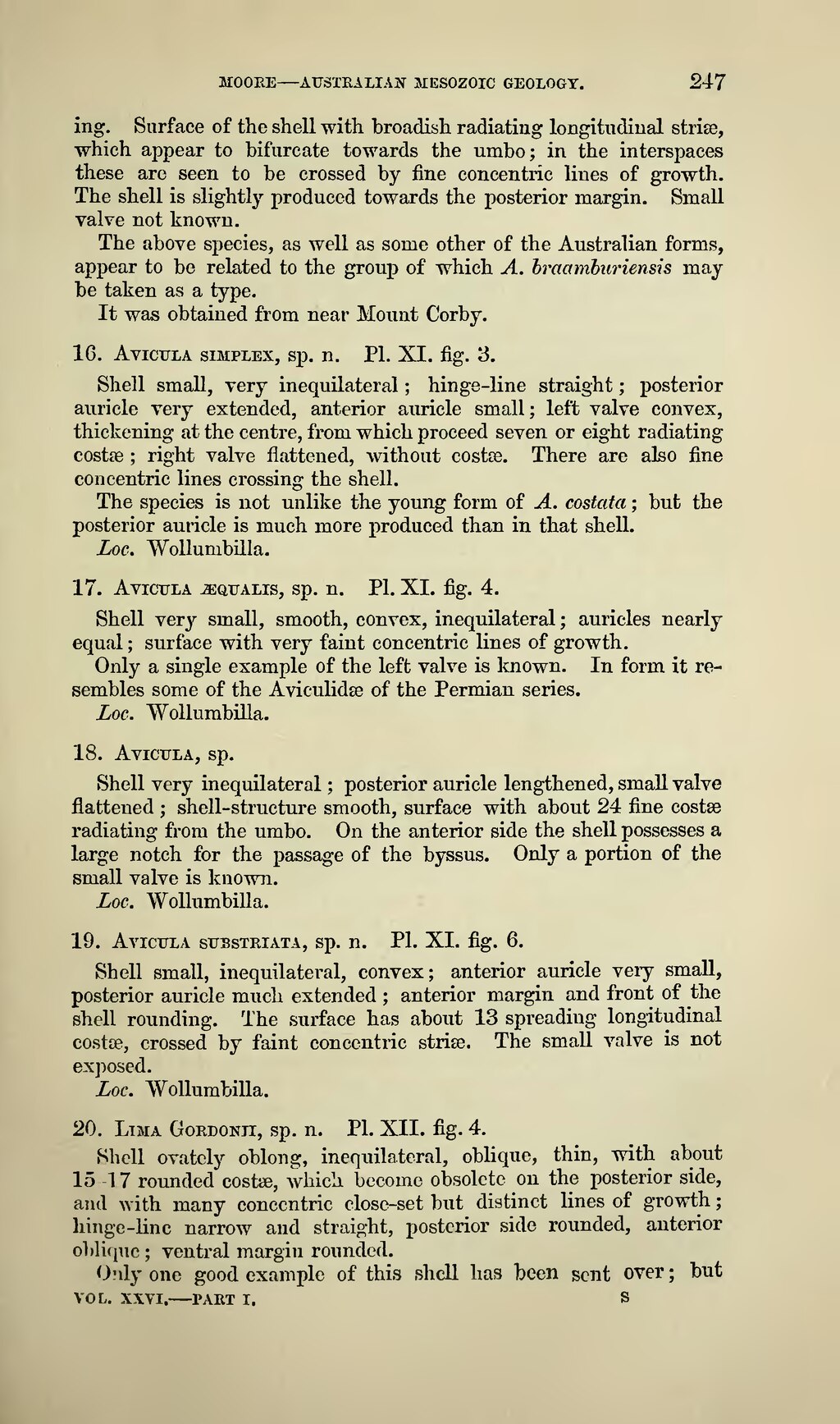MOORE — AUSTRALIAN MESOZOIC GEOLOGY. 247
ing. Surface of the shell with broadish radiating longitudinal stride,
which appear to bifurcate towards the umbo; in the interspaces
these are seen to be crossed by fine concentric lines of growth.
The shell is slightly produced towards the posterior margin. Small
valve not known.
The above species, as well as some other of the Australian forms, appear to be related to the group of which A. braamburiensis may be taken as a type.
It was obtained from near Mount Corby.
16. Avicula simplex, sp. n. P1. XI. fig. 3.
Shell small, very inequilateral ; hinge-line straight ; posterior auricle very extended, anterior auricle small ; left valve convex, thickening at the centre, from which proceed seven or eight radiating costae ; right valve flattened, without costae. There are also fine concentric lines crossing the shell.
The species is not unlike the young form of A. costata ; but the posterior auricle is much more produced than in that shell.
Loc. Wollumbilla.
17. AVICULA AEQUALIS, sp. n. Pl. XI. fig. 4.
Shell very small, smooth, convex, inequilateral; auricles nearly equal ; surface with very faint concentric lines of growth.
Only a single example of the left valve is known. In form it resembles some of the Aviculidae of the Permian series.
Loc. Wollumbilla.
18. Avicula, sp.
Shell very inequilateral ; posterior auricle lengthened, small valve flattened ; shell-structure smooth, surface with about 24 fine costae radiating from the umbo. On the anterior side the shell possesses a large notch for the passage of the byssus. Only a portion of the small valve is known.
Loc. Wollumbilla.
19. Avicula substriata, sp. n. Pl. XI. fig. 6.
Shell small, inequilateral, convex; anterior auricle very small, posterior auricle much extended ; anterior margin and front of the shell rounding. The surface has about 13 spreading longitudinal costae, crossed by faint concentric striae. The small valve is not exposed.
Loc. Wollumbilla.
20. Lima Gordonii, sp. n. Pl. XII. fig. 4.
Shell ovately oblong, inequilateral, oblique, thin, with about 15-17 rounded costae, which become obsolete on the posterior side, and with many concentric close-set but distinct lines of growth ; hinge -line narrow and straight, posterior side rounded, anterior oblique ; ventral margin rounded.
Only one good example of this shell has been sent over; but
vol. xxvi. — part i. s
